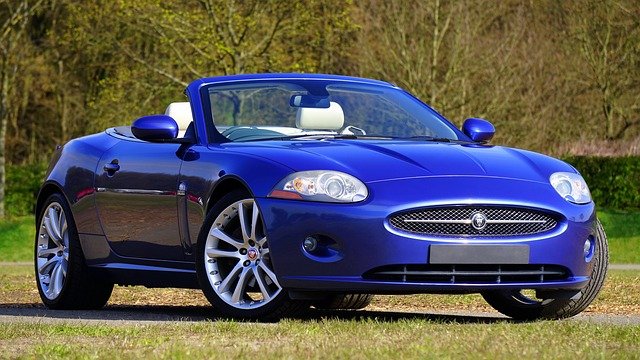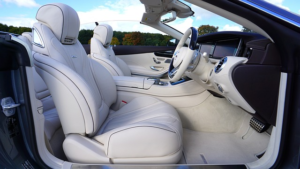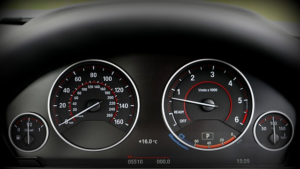As the U.S. doubles down on infrastructure, here’s how to build bridges for people instead of cars – Fast Company
In the United States, infrastructure tends to really mean two things: roads and bridges. The subtext there is that most infrastructure projects are primarily built for cars.
But they don’t have to be. Across the country, new bridges that are open, under construction, or in the design phase are turning cars-only projects into multimodal connectors. By cutting down on the road space meant…….

In the United States, infrastructure tends to really mean two things: roads and bridges. The subtext there is that most infrastructure projects are primarily built for cars.
But they don’t have to be. Across the country, new bridges that are open, under construction, or in the design phase are turning cars-only projects into multimodal connectors. By cutting down on the road space meant for cars, and stretching out spaces for pedestrians, cyclists, and public transit, these new bridges are pushing the definition of American infrastructure.
In Portland, Oregon, Tilikum Crossing was the city’s first new bridge over the Willamette River in more than four decades, when it opened in 2015, and was the first in the country to be built for transit, pedestrian, and cyclist use only. In Los Angeles, a major bridge over the Los Angeles River will reopen later this year with a helix-shaped replacement that will include wide sidewalks, protected bike lanes, and several staircases connecting to a new riverfront park below. And in New York City, the Brooklyn Bridge recently had one of its vehicle lanes removed to add a two-way protected bike lane, the first major reconfiguration of the bridge since 1950 and something of a solution to cyclists and pedestrians having to compete for space on the previous path.
[Image: PAU]
The trend is spreading. In Indianapolis, a forthcoming bridge over Fall Creek, near the city’s downtown, has been designed to give over the majority of its space to pedestrians and cyclists. Expected to open in 2024, the bridge was designed by Practice for Architecture and Urbanism (PAU) with the German engineering firm Schlaich Bergermann Partner and located in the city’s 16 Tech Innovation District. PAU founder Vishaan Chakrabarti says the bridge still handles one lane of vehicular traffic in each direction, but dedicates 53% of its total space to pedestrians, cyclists, and other non-car users.
The idea for this mix came from the community. Chakrabarti says the planning process involved some highly attended public hearings via Zoom, and both city officials and designers got an earful about what the bridge could be from the city’s cyclist community, as well as a strong contingent of wheelchair users. Residents didn’t want just a mode of transportation, either—they wanted a landmark. “They really talked about the fact that people wanted a destination,” Chakrabarti says.
[Image: PAU]
Called Wave Bridge, its design features branching support structures that hold up the bridge, inspired by the trees along the banks, and a swooping profile that brings the structure down to its lowest point at the center point of the creek. Here, the pedestrian area spreads widest, creating a seating area and unobstructed vantage points up and down the creek. “That’s a really unique experience in the middle of a major American city,” Chakrabarti says.
Creating this kind of space in an infrastructure project is helping to broaden the idea of what infrastructure can do, as well as increasing a city’s quality of life, he adds.
[Image: PAU]
“When we talk about multimodal bridges and the notion that bridges should be more for pedestrians and bikes as opposed to cars, that’s often a conversation that gets limited to ultra-blue progressive cities on the coasts or cities in Europe,” says Chakrabarti. “I think people in this country are starting to connect the dots about how roadway infrastructure influences the shape and wellness of the community, and I think that’s just as true in middle America as it is in coastal America.”
But while these examples offer alternatives to the car-first designs of many bridge projects in the U.S., they may still be in the minority for a long while. Kevin DeGood is director of infrastructure policy at the Center for American Progress, and he says most of what’s being built today is continuing the car-oriented development patterns of the past. Some projects are being designed with the possibility of adding transit lines in the future, he says, with stronger foundations capable of carrying a train or streetcar line at some point. But these so-called transit-ready projects aren’t likely to become multimodal any time soon.
“You can have bridges sit for decades and decades and decades and be transit ready, but that doesn’t mean anybody has any intention of trying to put transit on it,” he says. “Think of how long it took the City of New York to put a dedicated bike lane on the Brooklyn Bridge.”
DeGood does see some hope in these few multimodal projects currently being built, but he also argues that these projects are a drop in the bucket compared to the thousands of projects built during the car-obsessed interstate highway building boom that stretched from the 1960s to the 1980s. “The peak of that construction was at a time when absolutely nobody conceived of anything other than trying to move cars,” DeGood says. “There’s been a lot of progress. But in some ways it shows you just how bad a position we’re starting from.”
But the passage of time may have a silver lining. The recent collapse of a bridge in Pittsburgh highlights the widespread aging and maintenance issues plaguing infrastructure in the U.S. A new report from the American Road & Transportation Builders Association says that 43,000 bridges across the country are “structurally deficient.” Projects like the multimodal bridge in Indianapolis offer a glimpse of what some of these bridges could become.






